Designed by Bits to Atoms and 3D printed by Post Industrial Crafts, the labyrinth of Chateaugiron is the first very large space frame ever 3D printed for a historical public space.
The labyrinth is based on a geodesic modular system and is made from 4,500 recycled water gallons. It is fully reconfigurable for all public activities. It responds to the Center for the Arts (Les 3 Cha) program as well as the symbolic demand for a labyrinth to complete and enhance the castle’s iconic presence.
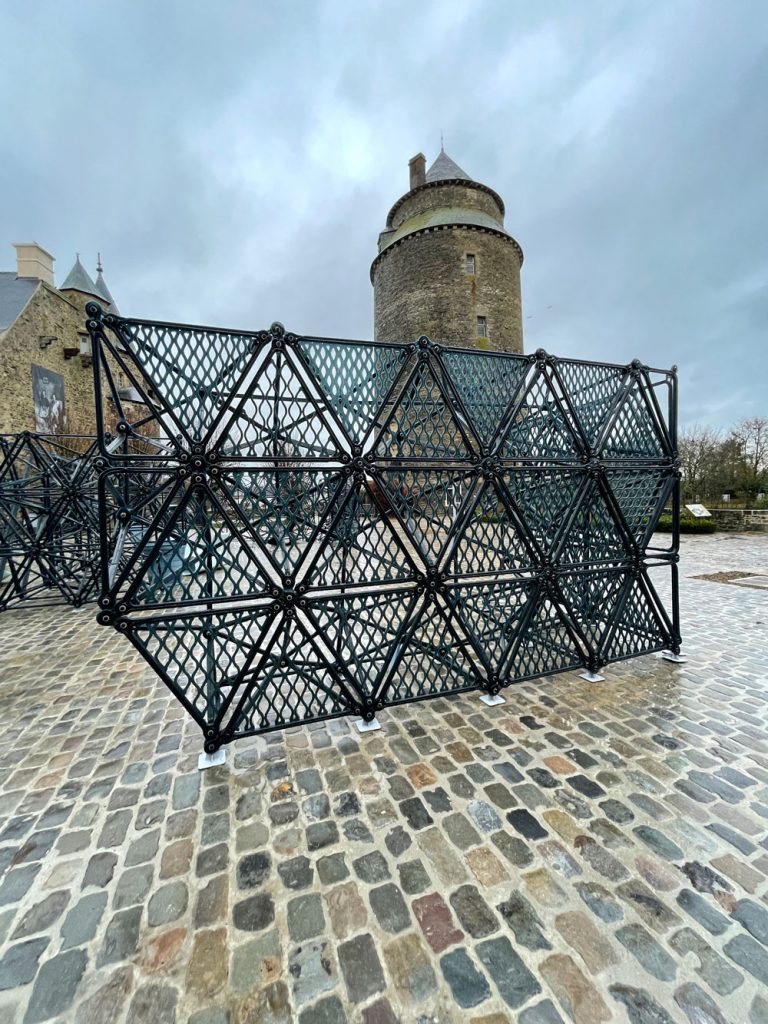
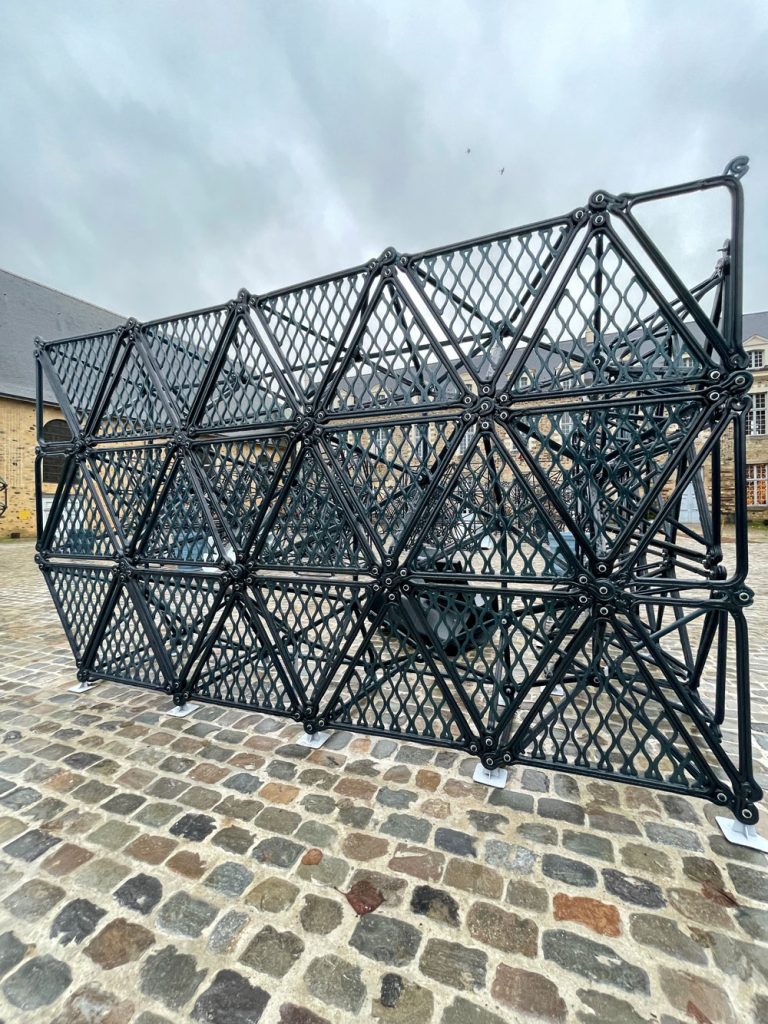
The labyrinth – a place of games and seduction, but also of contemplation – represents a potential model for symbolic depth with its own aesthetic in the collective imagination and castle garden typologies.
The Chateaugiron Labyrinth was built using Buckminster Fuller’s geodesic modular system, which allows for large surfaces to be covered with the least amount of material possible.
These three-dimensional structures have their own aesthetics, which are reminiscent of natural phenomena such as snowflakes, arabesques, and geometric compositions. They form images to be contemplated while ensuring maximum resistance with the least amount of weight and transparency required to not obstruct views of the castle.
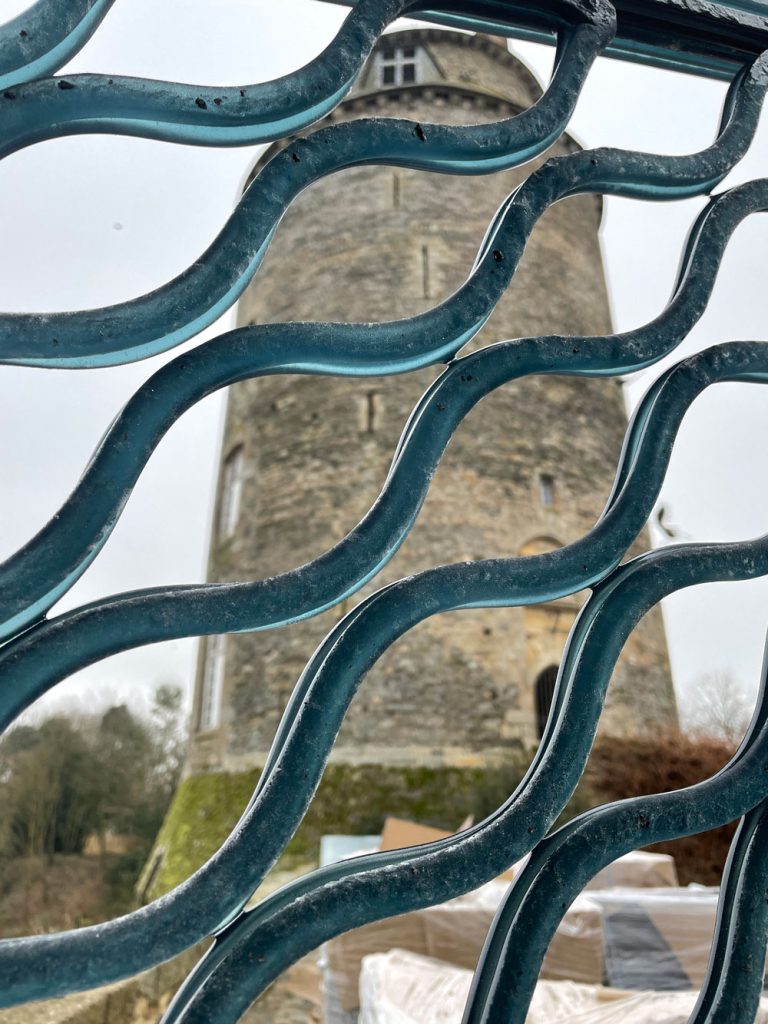
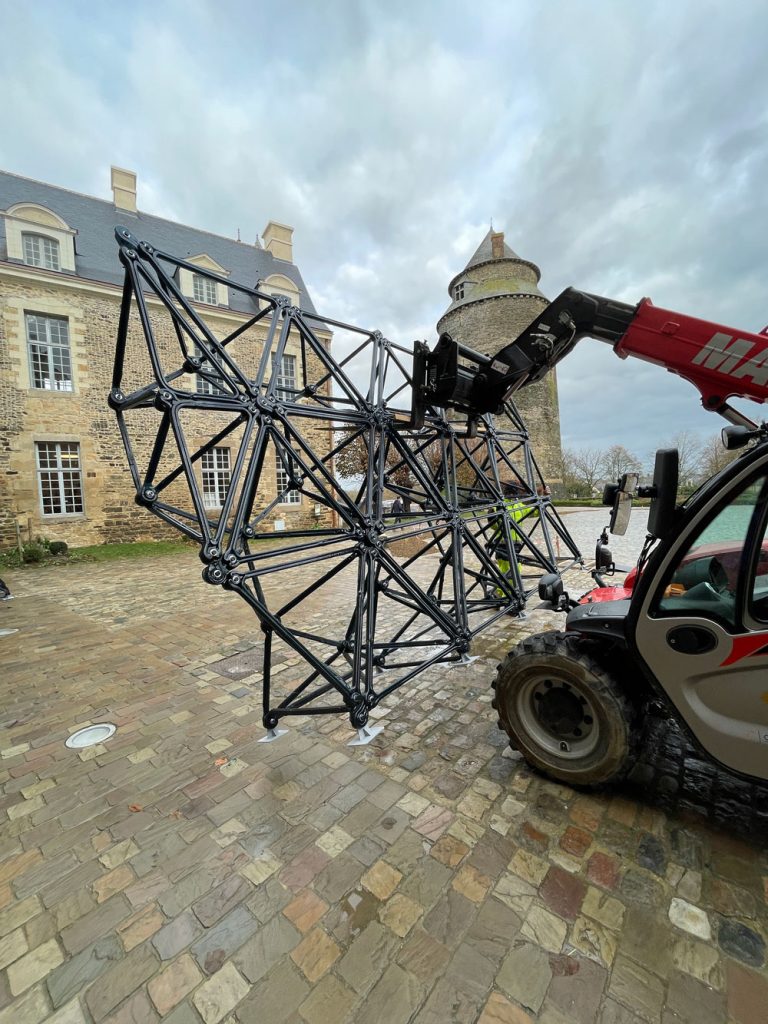
Entirely made of about 3,000 pieces of gigantic 3D Printed combinable elements, the hexagonal grid assembles the tetrahedrons into a stable and solid three-dimensional structure that creates large vertical planes with minimal material. Solid, light, movable, outdoor resistant, and maintenance-free. The placemaking installation allowed the creation of other uses and practices in the space in the courtyard that was once martial and empty and is now inhabited by many pockets of space.
The elements, with their steel legs, are self-supporting with no foundation required. The multiple assembly points are open to any use and allow for different public functions such as exhibitions, moving screens, hanging walls, scene backdrops, space division, etc…
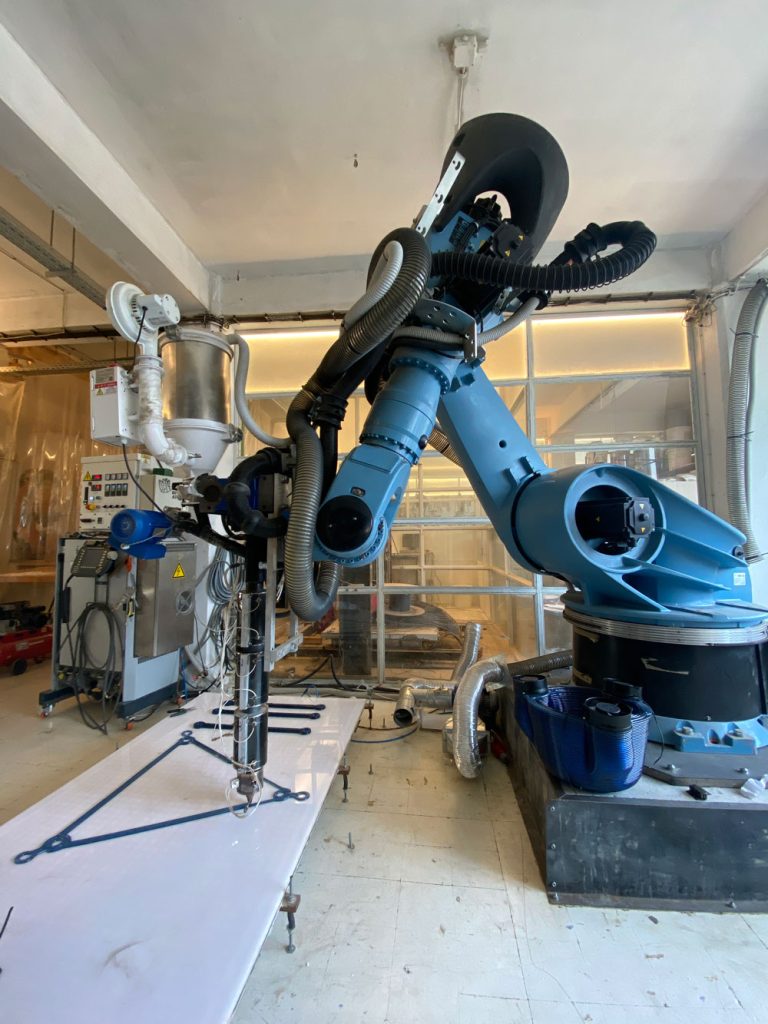
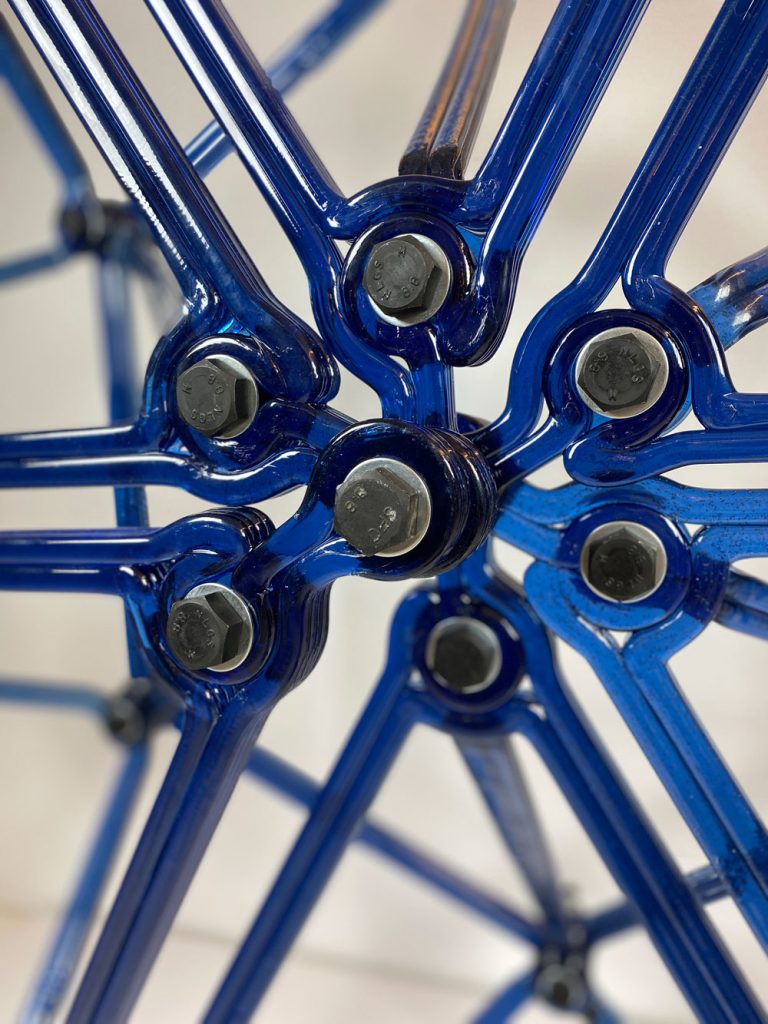
Structure – The geodesic grid is composed of three types of segments:
Hexagone edge
Tetrahedron edge
Equilateral triangular base of the Tetrahedrons
This geometric simplicity allowed the assembly to be undergone by the general public and is open to multiple configurations. The structures are also easy to handle because of their moderate weight and the lack of sharp edges or corners: 3D printing in a very large format creates soft, rounded profiles that play with the light.
The space frame walls allowed us to define pockets of space, which we complemented with 3D-printed benches and large pots made from the same material. Each time the elements are put back in a different conformation after being used for an event: a new labyrinth configuration is created. Instead of being disassembled and stored after an event it supported, the structure stays in the courtyard, proposing another maze layout to the visitors, and enriching the courtyard space with potential experiences. This perpetual renewal avoids any lassitude in the design and invites the public to rediscover it regularly.
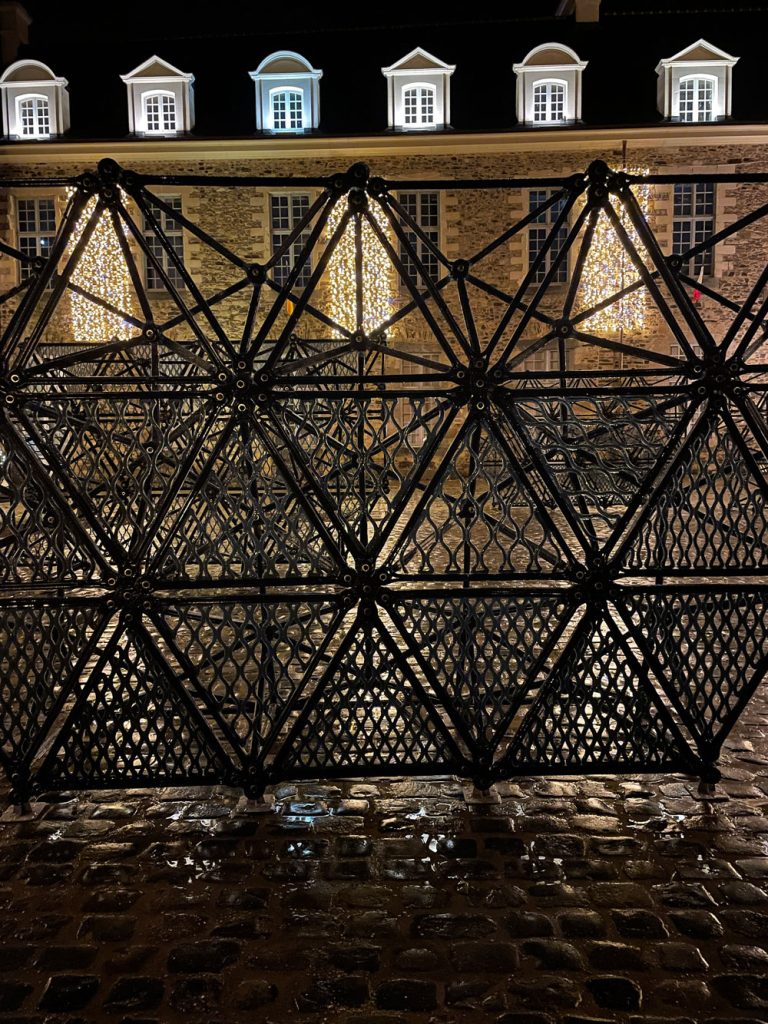
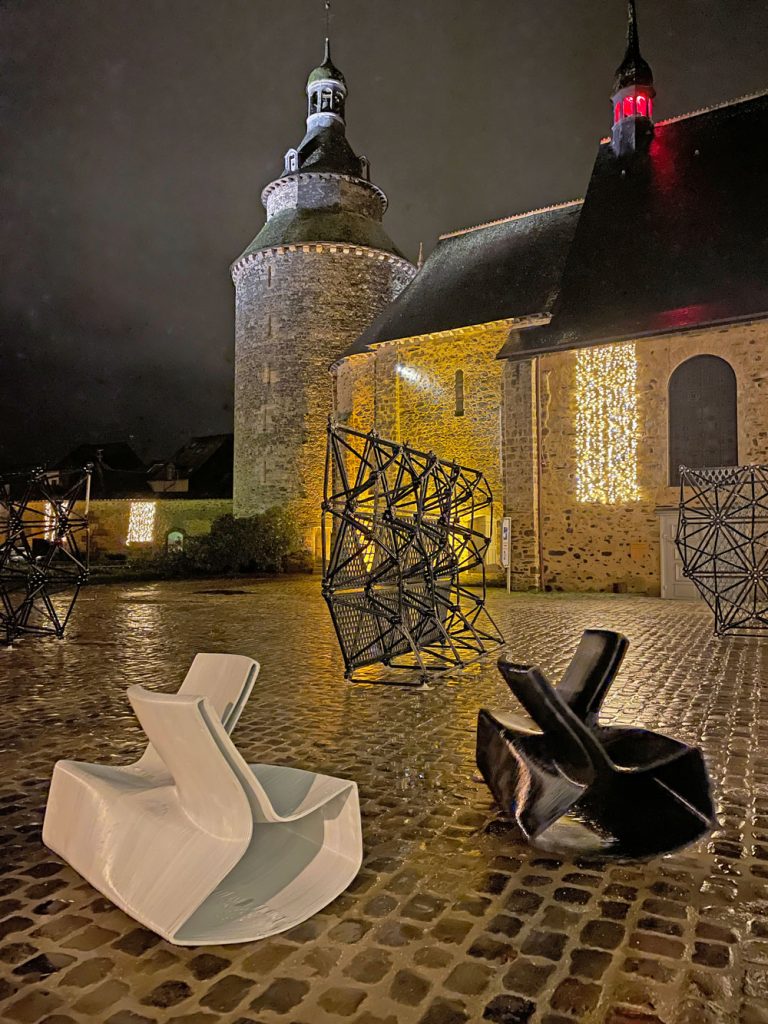
Materials:
The deep and transparent blue of the elements works very well with the blue of the slates of the castle roofs and is reinforced by the contrast between the old matte warm colored stones of the walls and the very smooth and slick 3D-printed recycled plastic.
Experience:
The Labyrinth of Chateaugiron takes over the courtyard space and transforms it for the pleasure of all. Children can explore the labyrinth while parents can sit on the benches scattered in several pockets of space in the shade of a tree. Pockets of space reproduce courtyards and plazas. In Middle Ages, the old city of Chateaugiron was mostly built with temporary structures made of wood and fabric, which did not last. We got used to a vision of emptied public spaces, which came only from decay. The maze installation is bringing back the scale of small urban pockets and function into the medieval town of Chateaugiron.
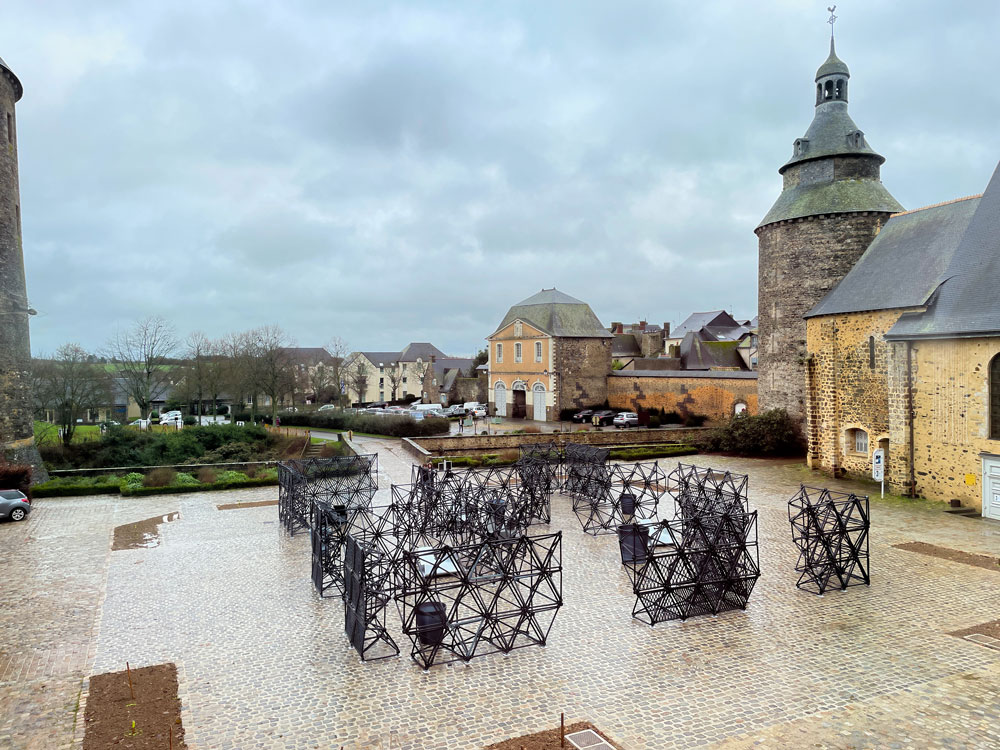
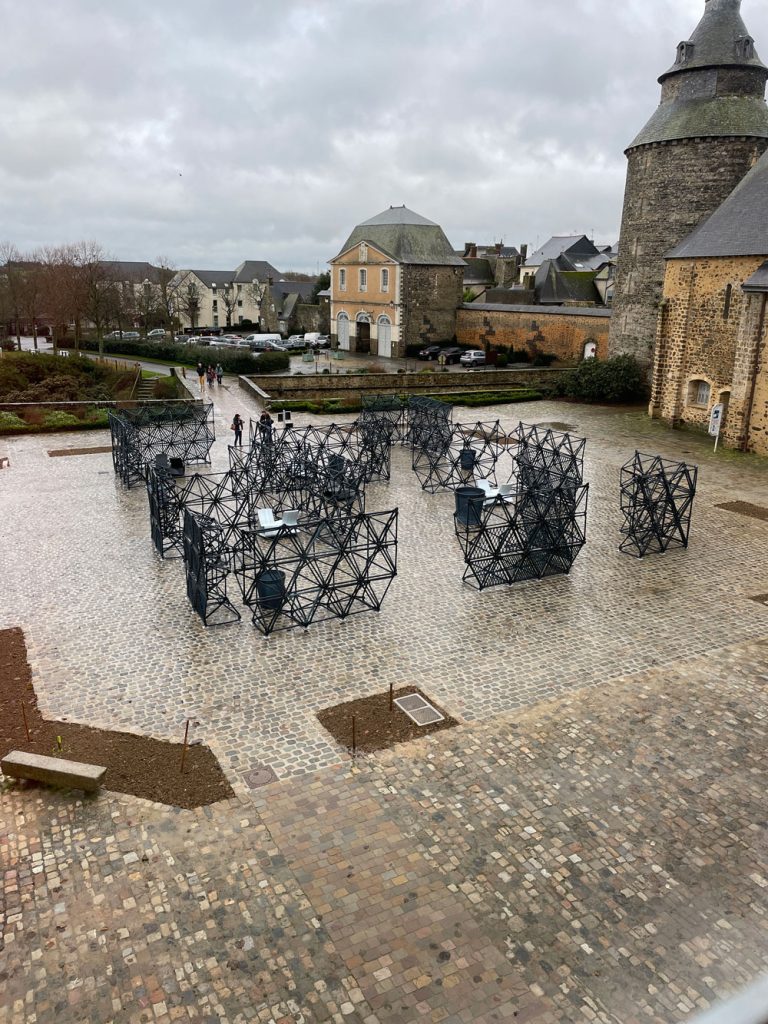




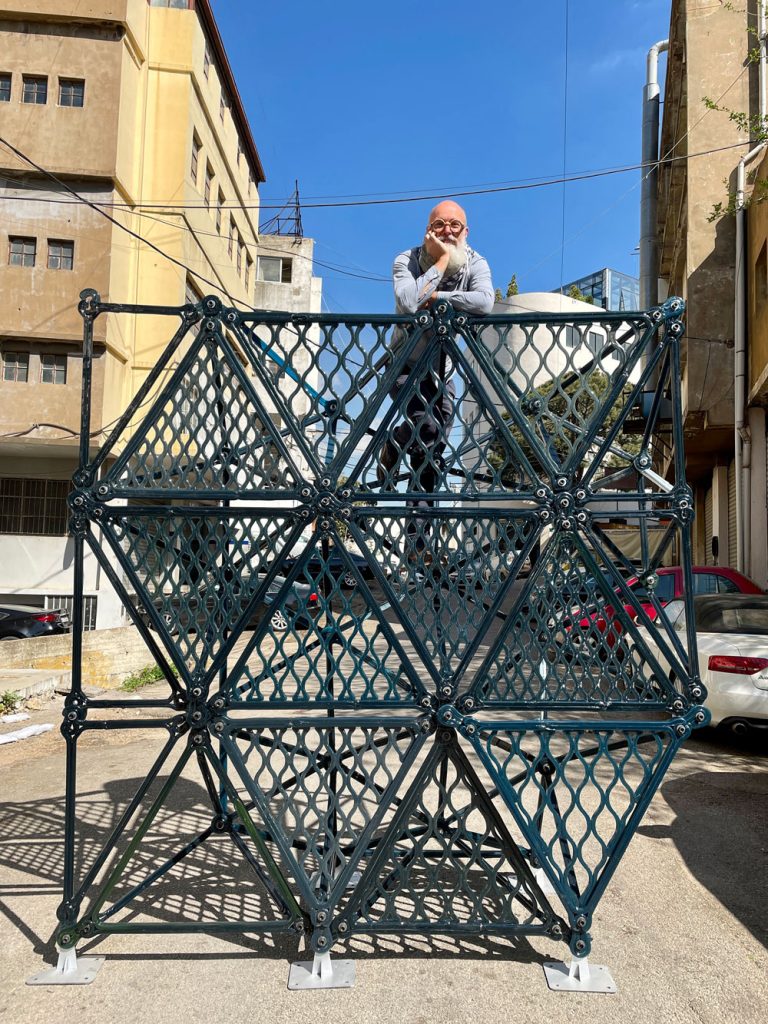

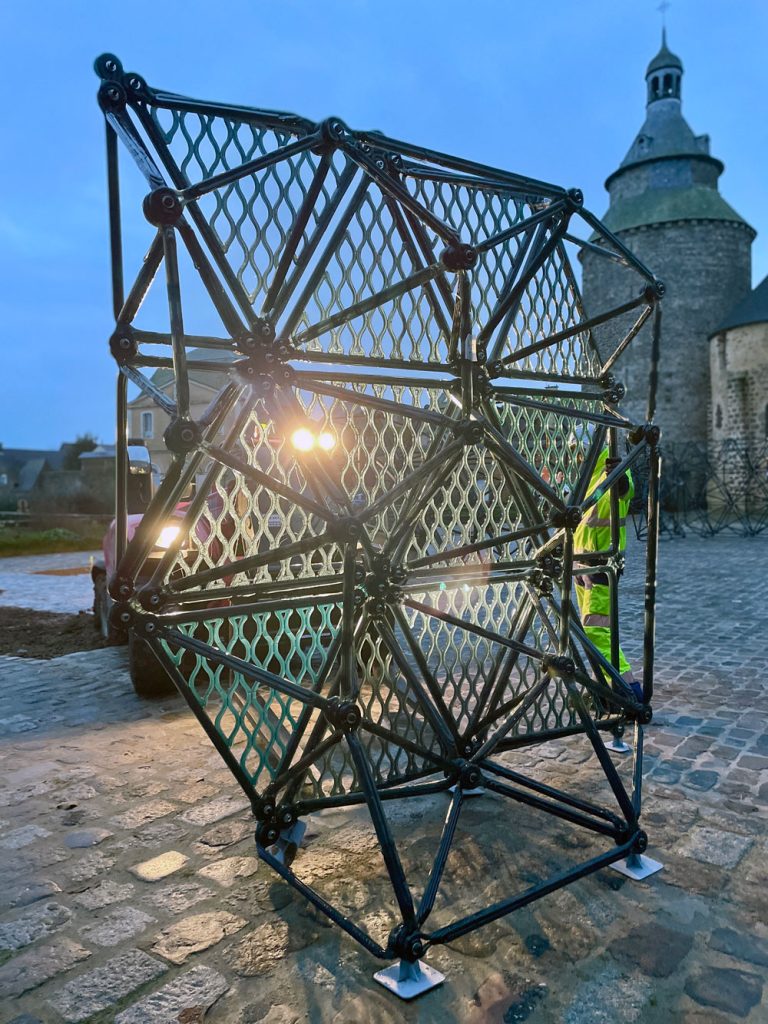





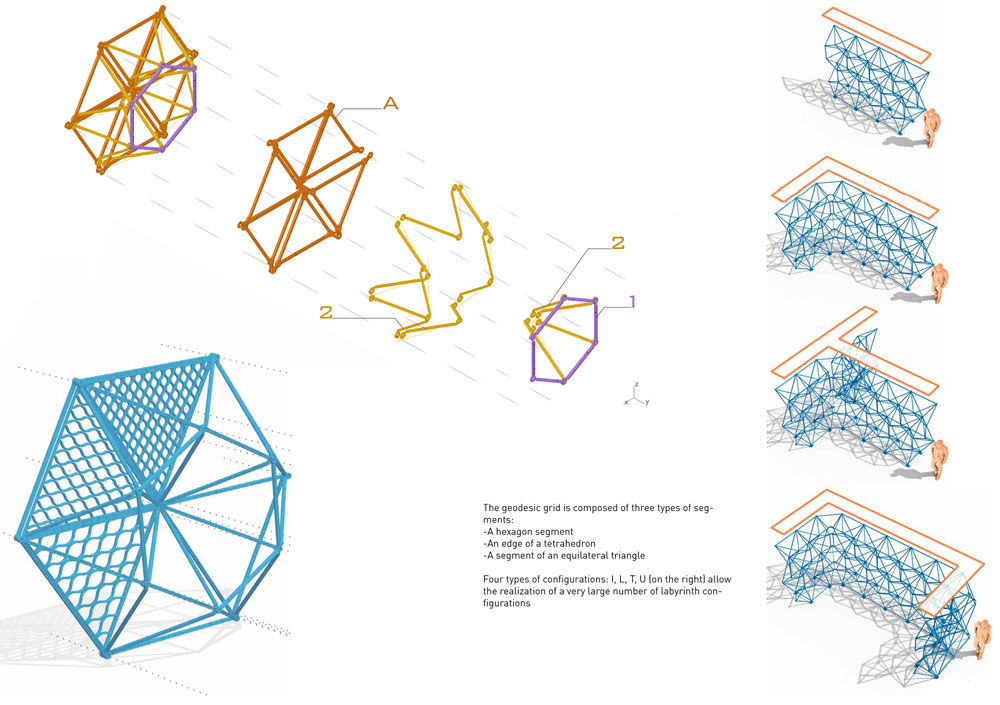
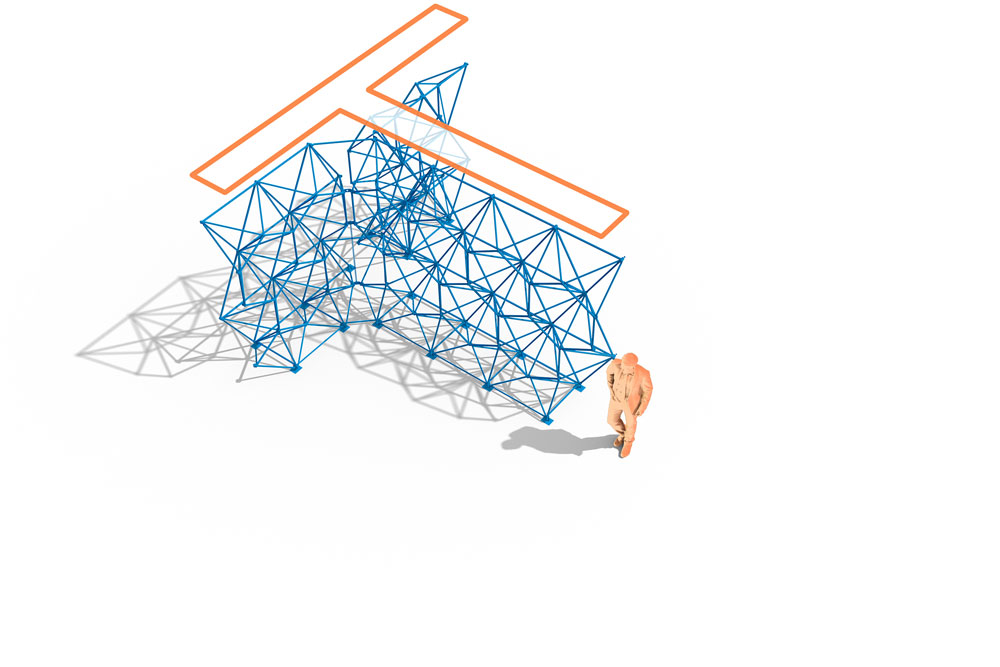
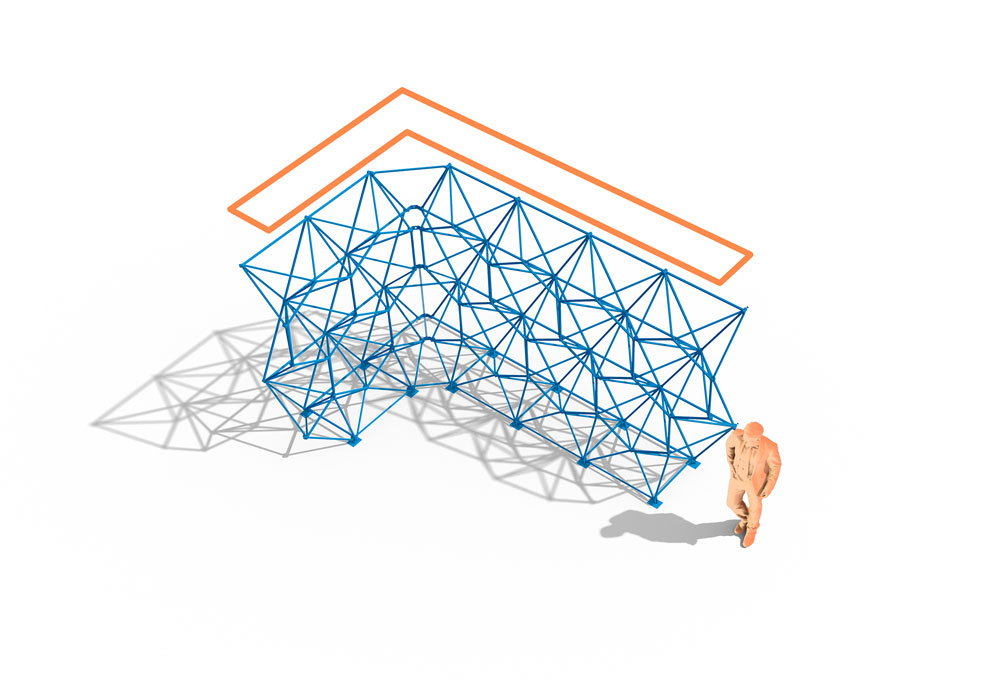




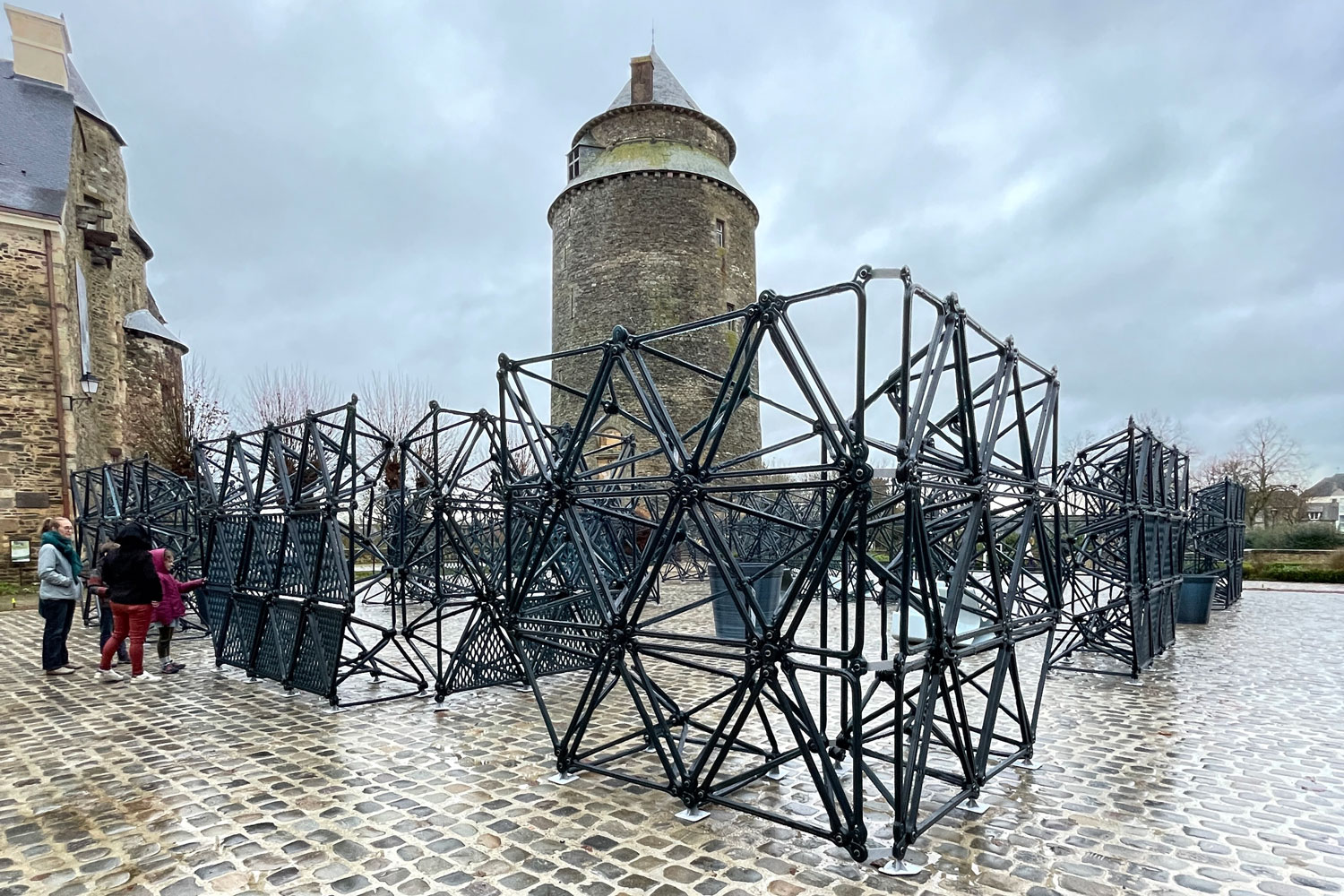














Leave a comment